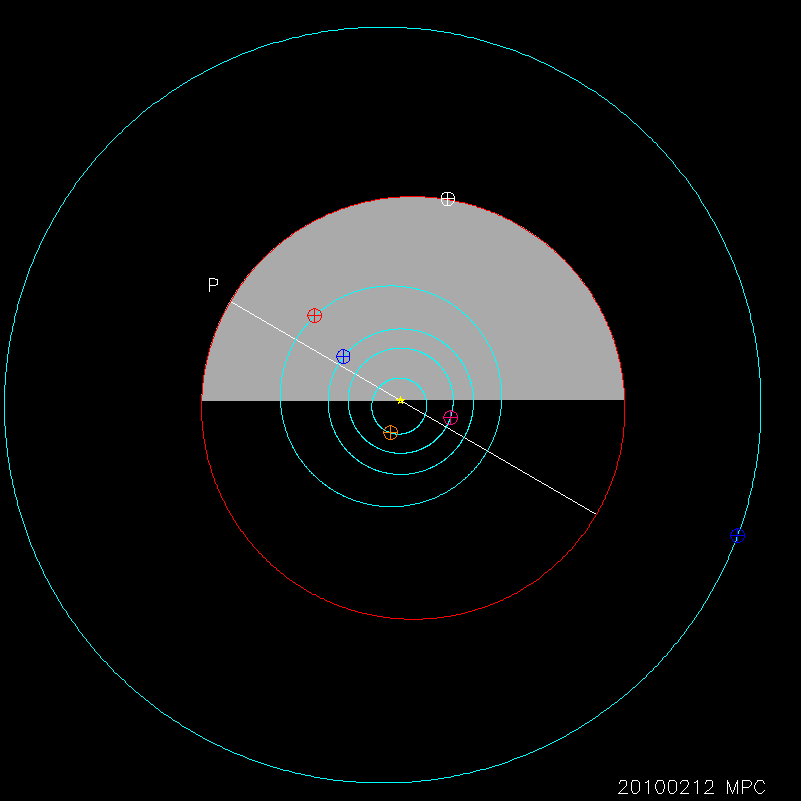(4305) Clapton
Minor planet number 4305 has been named in honor of the British guitar legend, Eric Clapton.The citation announcing the naming appeared on Minor Planet Circular 16249 (issued on 1990 Apr. 10), from which the following is extracted with permission:
(4305) Clapton = 1976 EC
Discovered 1976 Mar. 7 at the Harvard College Observatory's Agassiz
Station.
Named in honor of Eric Clapton (1945-- ), singer, composer and
guitarist extraordinaire. He is the most remarkable bluesman ever to come
out of England and his rock career has spanned more than 25 years. In the
mid-60s, graffito on a brick wall in London proclaimed: `Eric is God'. He
remains a musical megastar today, and is probably best known for the rock
classic `Layla' and the ballad `Wonderful Tonight'.
Read about how minor planets are named.
About (4305) Clapton
(4305) Clapton is in a 4.97-year elliptical orbit around the sun ranging in distance from 405.4 million km (at perihelion, closest point to the sun) to 465.9 million km (at aphelion, furthest point from the sun).The next perihelion passage will occur on 2011 Jan. 8.9 UT.
The orbit is inclined by 1.8 degrees to the ecliptic plane (the plane of the earth's orbit about the sun).
There is little information on the physical properties of (4305) Clapton. Even its diameter is uncertain--a range of 8 to 18 km is probable.
You will need a telescope to see this minor planet as its maximum brightness is some 1/9372 of the brightness of the faintest objects that can be seen with the unaided eye.
The diagram below show the orbit of (4305) Clapton in relation to the major planets in the inner solar system.

This view of the inner solar system is seen from the north ecliptic pole. The sun is the yellow star at the center of the image. The blue orbits represent, in increasing distance from the center, the major planets Mercury, Venus, Earth, Mars and Jupiter. The position of each major planet at the date indicated at the bottom of the plot is shown by the large circled cross. The orbit of the minor planet is shown in red, with the location of the minor planet (at the date indicated at the bottom of the plot) shown as a white circled cross. From this vantage point the planets revolve around the sun in a counter clockwise direction. The vernal equinox is off to the right. The portion of the minor planet's orbit that is below the plane of the earth's orbit is shaded grey. The perihelion point of the minor planet's orbit is at the end of the white straight line through the sun indicated by "P".
Also available is information on provisional designations.
Where is (4305) Clapton tonight? Customisable ephemerides are available.
Back to Rock & Roll Minor Planets
